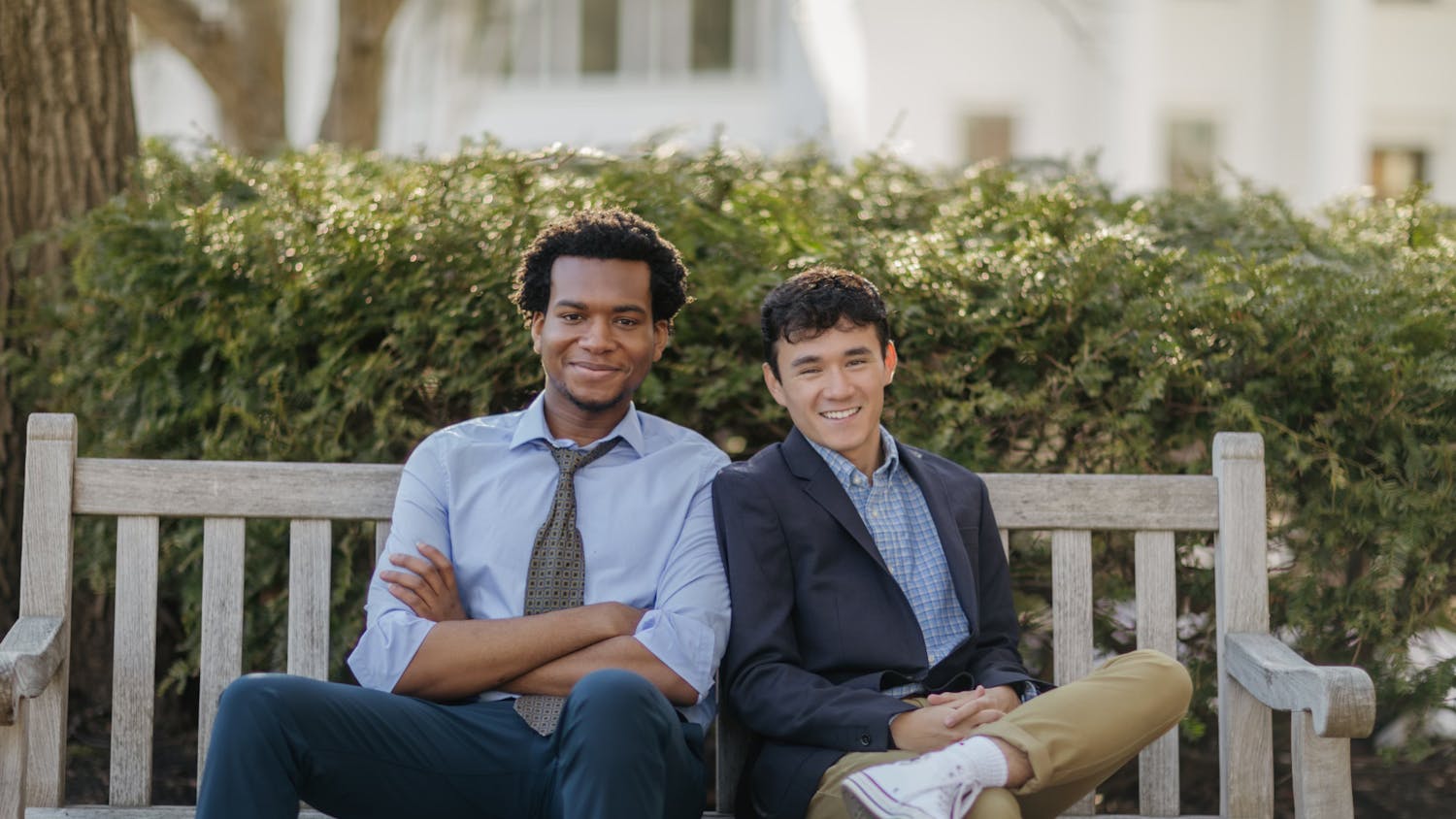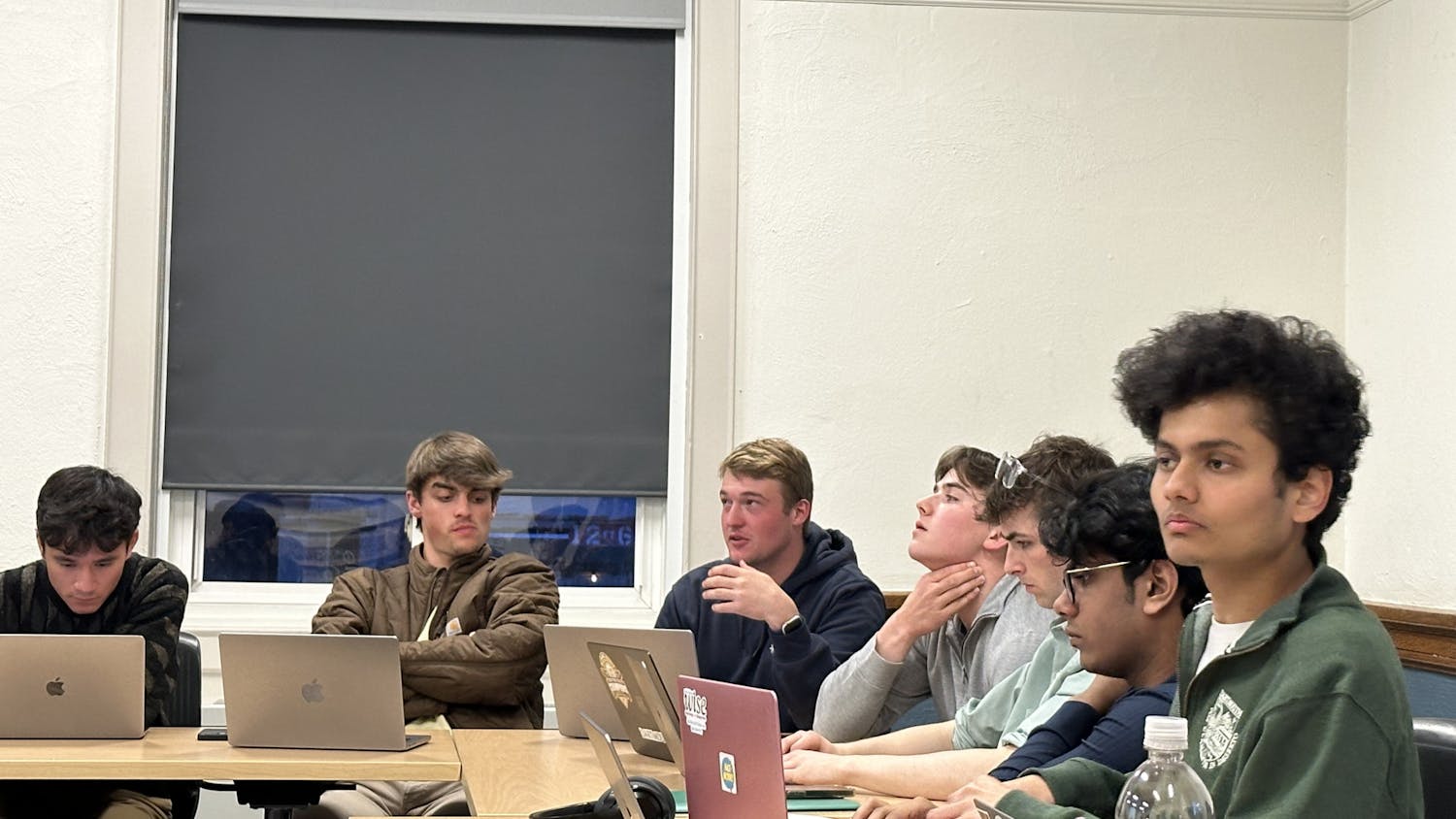“Your college education is one of the most enduring investments you will ever make,” Dartmouth’s financial aid website declares. The College says that it will meet the fully-demonstrated financial need of every accepted student as part of their financial aid program, one of the few schools in the nation that does so.
However, for some students, the necessity of taking out student loans remains a grim reality. For seniors, this reality may be especially sobering when they realize loan payments start once they shake College President Phil Hanlon’s hand and receive their diplomas.
In a survey conducted by The Dartmouth sent to members of the Class of 2016, 50 percent of the 297 responding students said they received financial aid from the College. The 297 respondents represented 27.7 percent of the 1,071 seniors. 30.6 percent said they took out private or federal loans under their own name, and 10.5 percent said their parents took out federal or private loans.
Of those seniors with personal loans, 87.8 percent provided dollar amounts for their loans: collectively, these respondents borrowed $1,723,664 or $23,939.80 each, on average.
Of those whose parents had taken out loans, 32.1 percent provided dollar amounts: the loans totaled $301,038 for the entire group, with an average loan size of $33,448.70.
In March, the Board of Trustees approved a 3.8 percent increase in tuition, mandatory fees and room and board for the 2016-2017 academic year, making the total cost of attendance rise to $66,174.
This amount is an increase from $63,744 for the 2015-2016 academic year.
However, this cost does not include indirect costs of attendance such as books, health insurance and travel. Additionally, first-year students are required to pay an additional $390 in room charges and fees.
The average financial aid award for the 2014-2015 academic year was $46,315, and the average student debt across all four years combined was $20,373. The College notes this amount accumulated at graduation is among the lowest debt levels in the country.
Dartmouth’s financial aid office uses a formula to determine each eligible student’s demonstrated need.
This need is equal to the cost of education minus expected student and family contributions, determined based on financial information submitted through the Free Application for Federal Student Aid and the College Board CSS Profile.
To meet the student’s determined need, the College offers a general Dartmouth scholarship, grants, loans and a federal work-study option.
Broadly speaking, there are three types of loans students can take out: federal loans such as Perkins Loans, unsubsidized and subsidized loans, Dartmouth need-based loans that cover what federal cannot and additional private loans.
Dartmouth guarantees that families who earn less than $100,000 per year and possess typical assets will have their student’s tuition fully covered, without being required to take out loans.
However, families with incomes above this level will have low-interest loans included in their aid packages.
Additionally, some parents opt to take out Parent Loans for Undergraduate Students Loans, a federal loan that may be as high as the cost of education minus other aid sources, to cover the family contribution. Interest rates for this loan type were fixed at 7.21 percent for the 2014-2015 academic year.
In an age where America’s student loan debt exceeds its household debt and increases at a rate of $2,726, the cost of education truly adds up once loan payments need to be made. However, the pressure to escape debt does not always govern the immediate decisions seniors make regarding their futures.
Kathy Rao ’16 said that she had taken on some debt, though it was not part of her financial aid package.
With her brother beginning college this past fall, she said she and her parents wanted to make sure there was leeway to pay for both of them.
Though she is concerned about paying back the debt, she said it did not affect her post-graduation plans.
“It didn’t really affect me in what job I should take up,” she said.
For others, the pressure from paying off student loans did affect their post-graduate plans.
A male member of the Class of 2016, who requested anonymity due to the sensitive nature of the topic, said that while he has not taken out loans himself, some of his friends have expressed concerns about repaying them after graduation.
Some of them have mentioned to him they cannot take jobs below certain salary levels because they need to pay back their loans.
He also said that some students who have not taken out loans also feel pressure to take higher-paying jobs to help repay their parents, especially the children of first-generation immigrants who grew up poor themselves.
Recent evidence suggests that middle-income families might be disproportionately affected by student loan debt. In 2013, sociology professor Jason Houle conducted a study on the relationship between parents’ socioeconomic resources and student loan debt.
His research revealed middle-income families, those who make $40,000 to $99,000, have a higher risk for debt that young adults from low and high-income families. Those whose families earned above $100,000 reported the lowest levels of debt.
Possible reasons for the disparity include difficulty for middle-income students to find sources of aid and debt-aversion amongst the lowest-income earners.
Another member of the Class of 2016, who also wished to remain anonymous for sensitivity purposes, said that he had to take out a significant number of private loans to finance his education.
While the financial aid office makes it possible for some lower-income students to attend college, he said, others like him are caught in a place where they need aid to be able to afford Dartmouth but do not receive it.
Looking back, he said that he would probably still have attended Dartmouth knowing what he does now, but might have made some changes in his academic path.
Within the Ivy League, Harvard College, Princeton University, Yale University, the University of Pennsylvania and Columbia University explicitly state on their respective financial aid websites that they do not require loans as a part of their financial aid packages.
However, Dartmouth, Brown University and Cornell University include loans as parts of their financial aid packages for some students. This difference may be due in part to the large endowments of Dartmouth’s rival institutions.
In 2015, the colleges that practice a no-loan policy as well as Cornell possessed larger endowments than the College. Dartmouth placed fourth among the Ivies with $.740 million in the endowment amount per student, behind Princeton, Yale and Harvard.
In 2012, Tier One Athletics, a website dedicated to providing information on athletic recruiting and competition at prestigious institutions, compared hypothetical financial aid awards at Ivy League schools using the net price calculators provided on the college’s respective websites.
For a family with two children, a combined income of $150,000, a $400,000 home and $90,000 in cash and investments, Dartmouth was the most expensive school in the League, costing $46,745 after financial aid. Princeton was the cheapest option with a cost of $27,180 after aid.
Despite the College’s commitment to providing financial aid for those in need, increased tuition costs continue to make loans and the possibility of graduating with debt an unfortunate reality for a sizable portion of students.
Whether taken out from private companies or as a part of the College’s financial aid package, they continue to be a pressing concern for graduating seniors.



